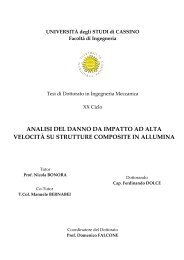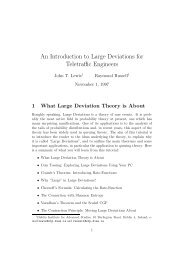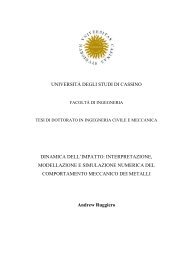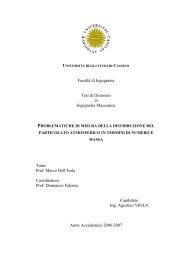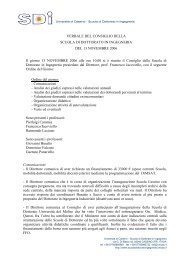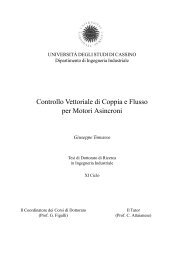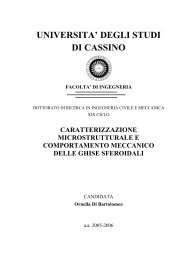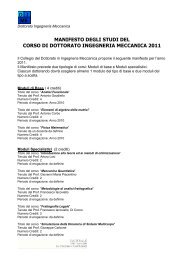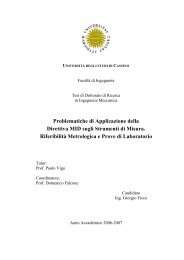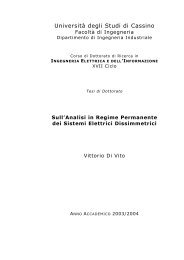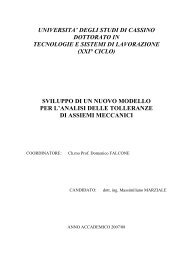Finite Strain Shape Memory Alloys Modeling - Scuola di Dottorato in ...
Finite Strain Shape Memory Alloys Modeling - Scuola di Dottorato in ...
Finite Strain Shape Memory Alloys Modeling - Scuola di Dottorato in ...
Create successful ePaper yourself
Turn your PDF publications into a flip-book with our unique Google optimized e-Paper software.
2.3 Biocompatibility of <strong>Shape</strong>-<strong>Memory</strong> <strong>Alloys</strong>-Ni-TiBiocompatibility is a crucial factor for the use of SMA devices <strong>in</strong> the human body; itrepresents the ability of a material to rema<strong>in</strong> biologically <strong>in</strong>nocuous dur<strong>in</strong>g itsfunctional period <strong>in</strong>side a liv<strong>in</strong>g creature. A biocompatible material must not produceany allergic reactions <strong>in</strong>side the host and, also, it mustn’t release ions <strong>in</strong>to thebloodstream (Shabalovskaya, 1995).Generally, the biocompatibility of a material is strongly related to allergic reactionsbetween the material surface and the <strong>in</strong>flammatory response of the host. Many<strong>di</strong>fferent aspects can contribute to these reactions such as patient’s characteristics(health, age immunological state, and so on), and material characteristics (rugosityand porosity of the surface and <strong>in</strong><strong>di</strong>vidual toxic effects of the elements present <strong>in</strong> thematerial).Several <strong>in</strong>vestigations have been conducted <strong>in</strong> order to establish the biocompatibilityof Ni-Ti-based alloys, and to exclude <strong>in</strong>tr<strong>in</strong>sic hazards <strong>in</strong>volved <strong>in</strong> their applications.The analysis of aspects related to the biocompatibility of these alloys is performed byassess<strong>in</strong>g each of their elements, nickel and titanium, separately.In particular, nickel, although necessary to life, is a highly poisonous element. Unlikenickel, titanium and its compounds are highly biocompatible; moreover, due to theirmechanical properties, they are usually employed <strong>in</strong> orthodontic and orthopae<strong>di</strong>cimplants. The oxidation reaction of titanium produces an <strong>in</strong>nocuous layer of TiO 2which sorrounds the sample. This layer is responsible for the high resistance tocorrosion of titanium alloys, and the fact that they are harmless to the human body.In general, the properties of titanium confer good biocompatibility of Ni-Ti alloys.2.4 Applications of <strong>Shape</strong> <strong>Memory</strong> <strong>Alloys</strong><strong>Shape</strong>-memory alloys have unique properties which are not present <strong>in</strong> the materialstra<strong>di</strong>tionally used <strong>in</strong> eng<strong>in</strong>eer<strong>in</strong>g applications. Accor<strong>di</strong>ngly, their use <strong>in</strong>troduces new17



